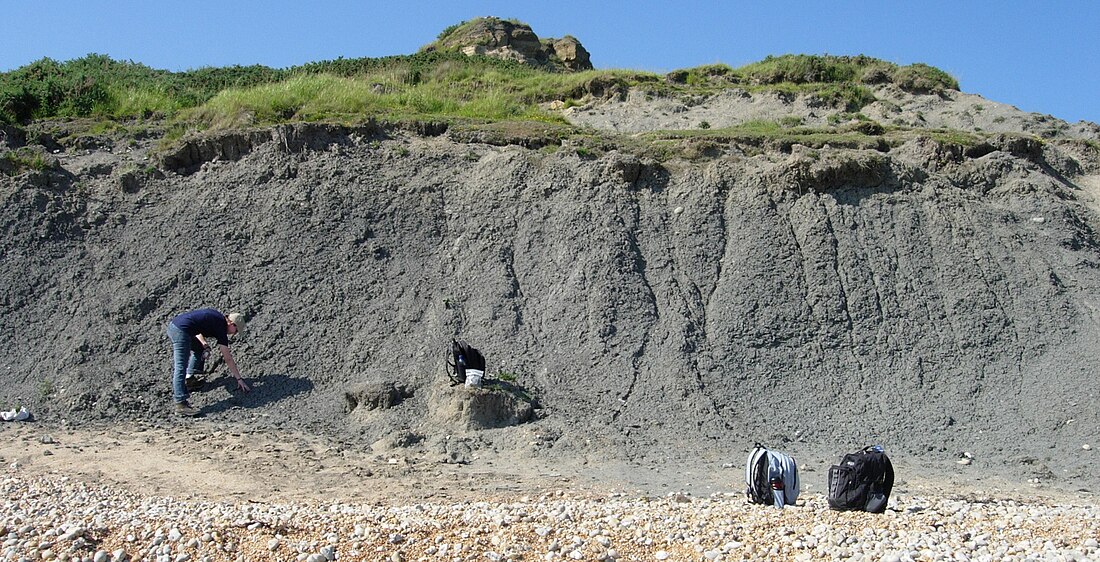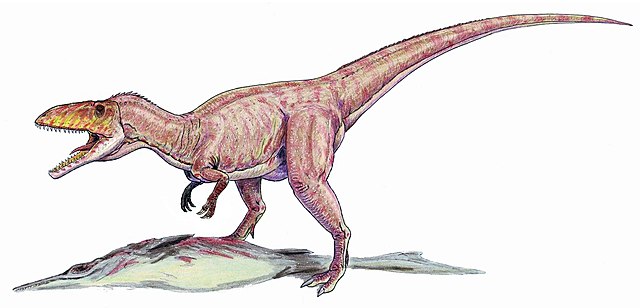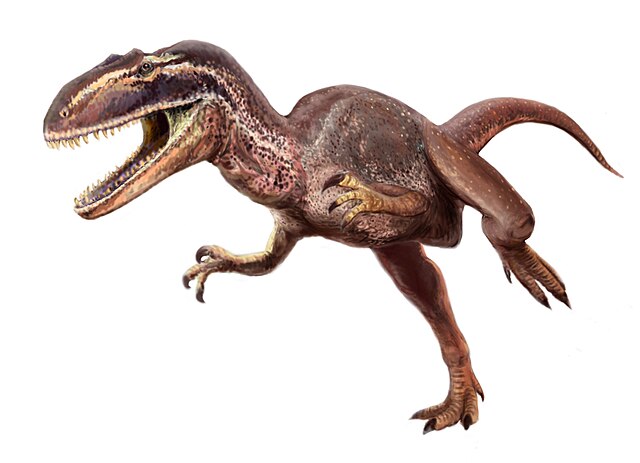Top Qs
Timeline
Chat
Perspective
Oxford Clay
Jurassic rock formation in southeast England From Wikipedia, the free encyclopedia
Remove ads
The Oxford Clay (or Oxford Clay Formation) is a Jurassic marine sedimentary rock formation underlying much of southeast England, from as far west as Dorset and as far north as Yorkshire. The Oxford Clay Formation dates to the Jurassic, specifically, the Callovian and Oxfordian ages,[1] and comprises two main facies. The lower facies comprises the Peterborough Member, a fossiliferous organic-rich mudstone. This facies and its rocks are commonly known as lower Oxford Clay. The upper facies comprises the middle Oxford Clay, the Stewartby Member, and the upper Oxford Clay, the Weymouth Member. The upper facies is a fossil poor assemblage of calcareous mudstones.
Oxford Clay appears at the surface around Oxford, Peterborough and Weymouth and is exposed in many quarries around these areas. The top of the Lower Oxford Clay shows a lithological change, where fissile shale changes to grey mudstone. The Middle and Upper Oxford Clays differ slightly, as they are separated by an argillaceous limestone in the South Midlands.
Remove ads
Palaeontology
The Oxford Clay is well known for its rich fossil record of fish and invertebrates.[2] Many of the fossils are well preserved, occasionally some are found exceptionally well preserved. Animals which lived in the Oxford Clay Sea include plesiosaurs, marine crocodiles, ichthyosaurs, cephalopods (such as belemnites), bivalves (such as Gryphaea), and a variety of gastropods. Dinosaur eggs are stratigraphically present in the Lower Oxford Clay. Geographically, they are located in Cambridgeshire, England.[3]

Remove ads
Fossil Content
Summarize
Perspective
Color key
|
Notes Uncertain or tentative taxa are in small text; |
Ornithischians
Indeterminate euronithopod remains stratigraphically present in the Lower Oxford Clay and geographically located in Cambridgeshire, England.[3]
Saurischians
Pterosaurs
Additional indeterminate pterosaur material is stratigraphically present in the Weymouth and Peterborough Members.[16]
Ichthyosaurs
This section needs additional citations for verification. (November 2024) |
Plesiosaurs
This section needs additional citations for verification. (November 2024) |
Pachycormiformes
This section needs additional citations for verification. (November 2024) |
Thalattosuchians
This section needs additional citations for verification. (November 2024) |
Remove ads
Economic use
Oxford Clay has a porous consistency and is soft and is often used in the making of roads. It is also the source of the Fletton stock brick of which much of London is built. For brick making, the Oxford Clay has the advantage of containing carbon which provides part of the fuel required in firing it so reducing the requirement for an external fuel source.
See also
- List of fossil sites (with link directory)
- List of dinosaur-bearing rock formations
- Kimmeridge Clay
- London Clay
- Weald Clay
References
Further reading
Wikiwand - on
Seamless Wikipedia browsing. On steroids.
Remove ads

















